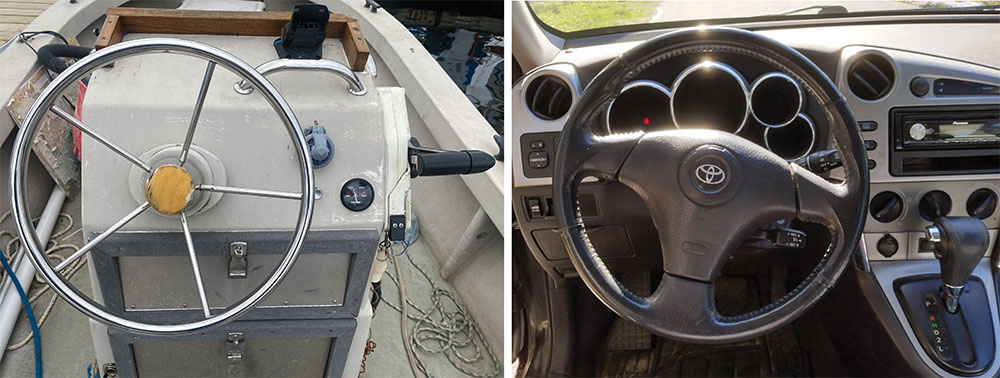
MAY 23, 2022
By Randy Randall
June 2022
I know it may seem obvious, but boats are not cars. That said, every summer here at the marina, we have our share of bunged-up docks, bent props and smashed electrical towers, all because most new boat owners seem to think running a boat is as simple as driving a car.
Too often, we have seen a young guy, usually, or a young couple, arrive with their new boat, turn the key and take off down the river going like 60, only to run into the marine warden who promptly writes them a ticket for exceeding the no-wake zone. Unlike cars, speed limits on the river are not posted in MPH but with signs that say, “No Wake Zone” and “Headway Speed Only.” The new boaters seem to have no idea.
And boats don’t have brakes like cars do. There’s no pedal on the floor to stand on when you’re about to crash into a dock. Boats stop by reversing their engines, and that takes time. Large cargo ships need a mile or more to coast to a full stop. Like the adage says, never go any faster than you want to hit the dock! When you steer a car, the front end turns. When you steer a boat, it’s the back end that moves. Knowing this becomes really important when maneuvering into a boat slip or through a populated anchorage.
Cars don’t have fuel overflows, but boats do, so it’s essential to be careful when filling up that the gasoline or diesel doesn’t pollute the river, lake or harbor.
Car engines are surrounded by moving air. Inboard boat engines, on the other hand, are closed in and need to be well ventilated before starting. Cars absorb the bumps and potholes in the road with independent suspension, but boats don’t have springs or shock absorbers. The hull design and common sense of the captain keep people safe and avoid injuries.
Both vehicles have safety equipment. Cars use seat belts and air bags; boats have life jackets, VHF radios and bilge pumps. Cars aren’t influenced much by wind and current, yet these are the main environmental influences on boats: the prevailing wind, the set of the tide and the force of the current. Cars obey traffic laws and signals so that people can pass and cross intersections safely. Boats also have traffic laws called “Rules of the Road,” but the average weekend boater seems to be only vaguely familiar with them.
The horn on a car is an alarm. The horn on a boat is a communication device. In place of road signs, waterways use navigation buoys, and their meaning changes depending on whether you are coming or going. We control the speed of a truck or car with the accelerator, but the throttle on a boat is usually a lever you push or pull. Someone unfamiliar with how hard to push or how far to push the lever could send his boat flying into the seawall! Most of the obstacles to driving are visible. You can spot the pothole or the detour up ahead, but boating obstacles such as shallows, sandbars and ledges are hidden and not easily seen.
Boaters need to recognize the channel markers and be able to read a chart or interpret a chart plotter to avoid running aground. And when you park your car, you just put the lever in park and pull on the hand brake. When you park the boat, you tie it to the dock with knots that are strong and secure. If you’re out on the water and need to park the boat, lower the anchor off the bow and set it properly with sufficient scope. Out on the ocean, gas stations are nonexistent, so it’s vital to monitor the boat’s fuel and have enough extra for emergencies. Likewise, the weather doesn’t usually have a huge impact on car travel unless there’s a tornado or blizzard. Weather on the water, though, is crucial to having a safe and enjoyable time with your boat, so following and understanding the marine weather reports is key to making it back home safely.
As much as people would like to think driving a boat is just as easy as driving a car – it’s not. Things go from bad to worse quickly when you’re on the water, and people can get hurt, which is all the more reason to take it easy, go slow, learn from others, know the rules and stay safe. “Fair winds and following seas.”
Frequent contributor, correspondent and friend. Randy Randall is co-owner of Marston’s Marina in Saco, Maine, and a dreamer and waterman of the first order.

